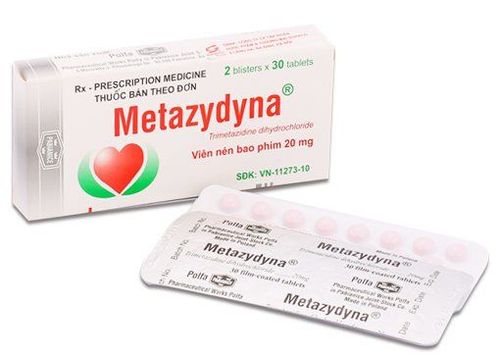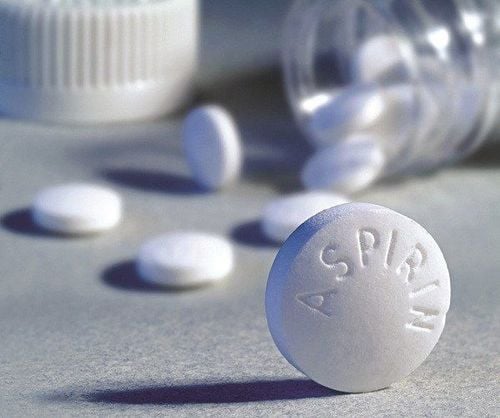This is an automatically translated article.
Gavix belongs to the group of cardiovascular drugs, used to prevent and treat disorders caused by thromboembolism. So what is Gavix and how is it used?
1. What is Gavix?
The drug contains the active ingredient Clopidogrel in the form of Clopidogrel besylate 75 mg and excipients just enough for 1 tablet. The drug is prepared for human consumption in the form of film-coated tablets. Gavix medicine is packaged in a box, each box includes 1 blister x 14 tablets.
2. Uses of Gavix
Gavix is indicated for use in the following cases:
Patients with myocardial infarction from a few days to less than 35 days; Patients with ischemic stroke from 7 days to less than 6 months; Patients with established peripheral arterial disease; Patients with atherosclerosis who have recently had a stroke or myocardial infarction. Gavix is contraindicated in the following cases:
Patients with hypersensitivity to Clopidogrel or any of its ingredients. Experiencing gastrointestinal bleeding, retinal or intracranial hemorrhage. The patient has severe liver failure.
3. Dosage and how to use Gavix
Gavix is taken orally and can be taken with or without meals. Users can refer to the drug dosage as follows:
Adults and the elderly: Take 1 tablet equivalent to 75mg/day. No dose adjustment of Gavix is required for the elderly or patients with renal disease. Patients with a history of atherosclerosis: Take 1 tablet equivalent to 75mg/day. The prophylactic dose to prevent symptoms of thromboembolic disorders such as myocardial infarction, peripheral artery disease and stroke is: 1 tablet equivalent to 75 mg/day. Patients with acute coronary syndrome: The starting dose is 300 mg, administered as a single dose, and the maintenance dose is 75 mg/day. Note: Some symptoms of drug overdose include: Prolonged bleeding time and complications of bleeding, vomiting, fatigue, shortness of breath, gastrointestinal bleeding. If the above symptoms appear, stop taking the drug and immediately notify your doctor or go to the nearest hospital for diagnosis and treatment.
4. Side effects when using Gavix
Some unwanted side effects when using Gavix may be encountered including:
Common side effects:
Gastrointestinal disorders appear symptoms such as diarrhea, abdominal pain, indigestion, sadness vomit; Skin allergies. Uncommon side effects:
Chest tightness, nosebleeds. Rare side effects:
Gastrointestinal bleeding; Stomach ulcers; Decrease in neutrophils; Severe agranulocytosis; Thrombocytopenia or purpura; Aplastic anemia, kidney disease with symptoms such as nephritis, loss of taste, acute arthritis. If the above undesirable symptoms appear, the patient should immediately stop using the drug and notify a specialist for advice.
5. Gavix drug interactions
A pharmacodynamic interaction may occur with concomitant use of Clopidogrel and Aspirin, Warfarin or Heparin leading to an increased risk of bleeding. Therefore, caution should be exercised when clopidogrel is co-administered with these drugs. There may be an increase in potential gastrointestinal bleeding with concomitant use of Naproxen and Clopidogrel. Therefore, caution should be exercised when clopidogrel is used concomitantly with naproxen and non-steroidal anti-inflammatory drugs.
6. Some notes when using Gavix
Some cautions when using Gavix is recommended including:
For patients at risk of bleeding due to trauma, surgery or other bleeding pathology such as ulcers. The drug should be discontinued 7 days before surgery or when abnormal bleeding occurs. Patients with kidney failure, liver disease need to be careful when using the drug. For pregnant women: Clopidogrel is not recommended during pregnancy because there are no adequate and well-controlled studies in pregnant women. There have been no studies on the excretion of clopidogrel in breast milk, therefore caution should be exercised when clopidogrel is used in lactating women. Clopidogrel has no effect on people operating machinery, driving vehicles, people working at height and other situations. Above is information about the uses, dosage and precautions when using Gavix. To ensure safety for your health and maximize the effectiveness of your treatment, you need to take Gavix exactly as directed by your doctor. Store Gavix in a cool dry place, below 30°C and avoid direct sunlight.













